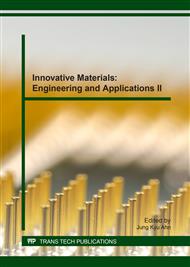p.548
p.554
p.563
p.569
p.574
p.580
p.587
p.595
p.601
Development of Sunlight LED Bollard Based on C/GFRP Floodlight Composite
Abstract:
It is safe and light because it uses carbon/glass fiber reinforced plastics (hereinafter referred to as C/GFRP) through this technological development. Moreover, sunlight LED luminous bollard, which was harmonized with the surrounding environment with diverse colors, was developed. Luminous bollard can reduce its weight and also increase its strength by adjusting the intensity and thickness of a product customized for each usage on the basis of the characteristics of C/GFRP composite. In addition, C/GFRP and steel pipe were compared for the compression test in order to compare the objective rigidity. As a result, this study could obtain a positive result graph of luminous bollard. To develop luminous bollard, the composite development process was configured through a fixture of pullout and filament winding. Diverse colors can be applied to luminous bollard. Hence, it is possible to select a color customized for each region. It is also possible to create an aesthetic harmony with a surrounding environment through LED lamps at night. The pipe, which was 50 percent lighter than stainless and also which had excellent tensile strength, was designed to develop the bollard that has superior convenience in terms of construction, maintenance and repair.
Info:
Periodical:
Pages:
574-579
Citation:
Online since:
February 2017
Authors:
Price:
Сopyright:
© 2017 Trans Tech Publications Ltd. All Rights Reserved
Share:
Citation:


